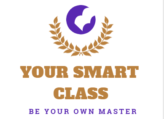Curriculum transaction is the core of the teaching-learning process, referring to the methods and strategies educators use to implement curricular goals effectively in real classroom settings. Traditionally, curriculum transaction has been teacher-centered and textbook-driven. However, recent innovations—driven by pedagogical theory, technological advancement, and educational reforms—have radically transformed how curricula are transacted.
In this article, we explore both theoretical frameworks and practical innovations in curriculum transaction, highlighting the dynamic shift toward learner-centered, technology-enabled, and experiential approaches. These innovations align with the objectives of India’s National Education Policy (NEP) 2020 and global educational movements toward inclusive and skill-oriented learning.
Table of Contents
What is Curriculum Transaction?
Traditional Approaches vs. Modern Needs
Theoretical Innovations in Curriculum Transaction
Practical Innovations in Curriculum Transaction
Role of NEP 2020 in Curriculum Innovation
Technology Integration in Curriculum Transaction
Active and Experiential Learning
Multilingual and Inclusive Practices
Assessment Reforms and Feedback Loops
Challenges in Implementing Innovative Practices
Conclusion
1. What is Curriculum Transaction?

Curriculum transaction refers to the implementation of the planned curriculum through interaction between teachers and learners using appropriate instructional strategies, learning resources, and assessment tools.
It encompasses:
Classroom instruction
Use of learning materials
Teaching strategies
Student-teacher interaction
Assessment and feedback mechanisms
The aim is to translate curriculum intent into learning outcomes in an effective and meaningful way.
2. Traditional Approaches vs. Modern Needs
Traditional Methods:
Rote memorization
Lecture-based teaching
Fixed content delivery
Textbook-centric learning
Limitations:
Passive learning
Lack of creativity
Low student engagement
Inadequate skill development
Modern Needs:
Critical thinking
Digital fluency
Creativity and collaboration
Personalized learning experiences
Hence, curriculum transaction requires innovation in both theory and practice to meet the evolving demands of learners.
3. Theoretical Innovations in Curriculum Transaction
A. Constructivist Theory
Learning is an active, constructive process.
Knowledge is built through experiences and interactions.
Teachers act as facilitators rather than information providers.
B. Bloom’s Taxonomy (Revised)
Curriculum delivery must target higher-order thinking skills like analyzing, evaluating, and creating.
C. Multiple Intelligences Theory (Howard Gardner)
Learners have diverse intelligences—linguistic, logical, kinesthetic, musical, etc.
Curriculum transaction should cater to multiple intelligences for deeper engagement.
D. Experiential Learning Theory (Kolb)
Emphasizes learning through experience, reflection, and experimentation.
4. Practical Innovations in Curriculum Transaction
1. Flipped Classroom:
Students access lectures at home via videos and engage in activities during class time.
2. Blended Learning:
Combines online and face-to-face teaching to enhance flexibility and engagement.
3. Collaborative Learning:
Group tasks, discussions, and peer-to-peer activities enhance critical thinking.
4. Gamification:
Integrating game elements in lessons to make learning enjoyable and interactive.
5. Differentiated Instruction:
Tailoring teaching methods to meet diverse learner needs and levels.
5. Role of NEP 2020 in Curriculum Innovation
India’s National Education Policy 2020 emphasizes transforming curriculum transaction through:
Experiential and Holistic Learning
Reduced Content Load
Multidisciplinary Approach
Use of Technology in Teaching
Teacher Autonomy and Empowerment
NEP aims to shift from rote learning to competency-based education, where learners develop practical skills and creativity.
6. Technology Integration in Curriculum Transaction
Key Tools:
Smartboards, tablets, and projectors
Learning Management Systems (LMS) like Google Classroom, Moodle
Educational apps and AI-powered tools
Benefits:
Interactive and engaging lessons
Access to global content and experts
Real-time performance tracking
Emerging Trends:
Augmented Reality (AR) and Virtual Reality (VR) in classrooms
AI tutors and chatbots for support
MOOCs and online certifications
7. Active and Experiential Learning
Modern curriculum transaction emphasizes learning by doing, ensuring that students participate actively in the learning process.
Methods:
Project-based learning
Role-playing and simulations
Field visits and internships
Case studies and problem-solving tasks
Advantages:
Improves retention and understanding
Enhances problem-solving and critical thinking
Prepares students for real-world challenges
8. Multilingual and Inclusive Practices
Multilingual Curriculum Delivery:
Teaching in the mother tongue/home language in early years is recommended by NEP 2020.
Encourages conceptual clarity and inclusive learning.
Inclusive Strategies:
Use of Universal Design for Learning (UDL)
Audio-visual aids for diverse learners
Gender-sensitive and socially responsive teaching
Special support for students with disabilities
9. Assessment Reforms and Feedback Loops
Traditional Assessments:
Focused mainly on memory-based tests
Modern Reforms:
Formative Assessment: Continuous evaluation through observations, quizzes, discussions
Portfolio Assessment: Showcases student work over time
Peer and Self-assessment: Encourages metacognition and responsibility
Feedback Practices:
Immediate and constructive feedback
Personalized performance reports
Use of analytics for targeted support
10. Challenges in Implementing Innovative Practices
Despite the benefits, certain challenges hinder innovative curriculum transaction:
Lack of teacher training and resistance to change
Inadequate digital infrastructure, especially in rural areas
Curriculum overload and rigid syllabi
Time constraints in syllabus completion
Assessment misalignment with innovative practices
Recommendations:
Continuous professional development for teachers
Investment in school infrastructure
Flexibility in syllabus and time management
Policy support and institutional leadership
11. Conclusion
Innovation in curriculum transaction is the need of the hour to ensure meaningful, relevant, and future-ready education. As theory and practice evolve, the emphasis is clearly shifting from teacher-led instruction to learner-centered engagement, and from rote learning to deep understanding.
Implementing innovations in curriculum delivery aligned with NEP 2020, 21st-century skills, and technological advancements will not only enhance academic achievement but also empower students to navigate life and work in a fast-changing world.
By adopting inclusive, technology-enabled, and active teaching methods, educators can transform classrooms into vibrant spaces of creativity, collaboration, and critical thinking.
Share this:
Discover more from YOUR SMART CLASS
Subscribe to get the latest posts sent to your email.








